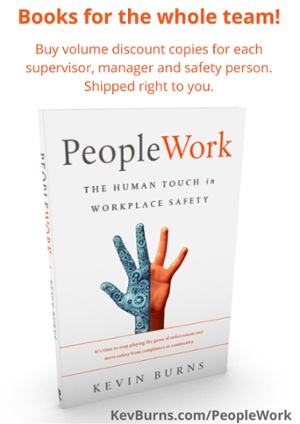Why fixing "safety" frustrates you
Asking people to think safety doesn’t help; it makes the frustration feel worse.
What part of safety do you want to fix? You will have a problem answering that question specifically. It will frustrate you that you cannot seem to articulate the exact part of safety that you want to fix. And if you feel some frustration, you will better understand why your people have a difficult time also fixing safety, or even rallying around it.
The problem really is that you’ve lumped safety into one giant category. Oh, sure, in your mind you can see all of the differing components of it but choosing which specific item to focus on and communicate to others though, well, that’s a daunting task. And the reason? You’re not being specific. You’re saying that safety needs to improve but you’re not identifying which specific part of it. Safety is a pretty big subject.
The power of the right words.
Here’s a little exercise that I do often to illustrate. I want you to picture a dog. In your mind’s eye, I want you to very clearly and very vividly picture a dog. Maybe your childhood first dog, or a specific breed, or a family or neighbour's pet. But, just take a mental snapshot of that dog and hold onto it.
Now, once you have that picture in your mind, ask yourself if you think that the picture of the dog in your mind is even going to remotely be the same as the rest of your team? Not likely is it?
For each member of your team you ask to picture a dog, you will likely get not just a different dog but a completely different breed almost every time. But here’s the interesting part: not one of your team is wrong because the exercise was to picture a dog. And they did. Just not the same one as you. But it was still a dog. When you ask someone to picture a dog, they will. But, no two are likely going to be the same.
Why "thinking safety" doesn't work.
Now, say the word safety and each person also has an image come to mind. But like the dogs, no two are the same. Safety is a very broad subject with many different images and pieces attached to it. The likelihood that two people see exactly the same image in response to being asked to picture safety, is remote.
Asking your people to “think safety” when they’re working is not going to work. It’s not specific enough. You need to be more specific than that.
Asking people to think safety doesn’t help. In fact, it makes the frustration level you will feel worse. You say one word, they see a hundred images. No two people see the same thing. What you see is not what they see. So, you need to get much more specific. You need to paint a very vivid picture for them to see. Your messaging needs to be clear, and concise and exact.
You can't fix "safety" in general.
 What specifically do you want your people to do about safety? How do you want them to act? What do you want them to say, to do, do accomplish?
What specifically do you want your people to do about safety? How do you want them to act? What do you want them to say, to do, do accomplish?
If you’re trying to get your people on-board with safety, you need to be very specific about what you want to communicate. You are never going to able to fix all of safety at once. You will only be able to chip away at it one specific piece at a time. If you aren’t specific, you are going to end up creating the very frustration with your people that you say that you want to clear up.
Communication is a very specific subject if you want that communication to improve safety performance.
So, let me ask the question again: what part of safety do you want to fix? If you need help with the answer, I’m happy to lend my expertise to you and your team. Let’s talk about how we can go about clarifying your safety message to improve your safety performance.
--
Learn more strategies to create a high-participation safety culture. Put Kevin Burns' expertise to work in your organization. Kevin Burns is the creator of the M4 Method™ and the 90-Day Safety Accelerator program. He is the author of PeopleWork: The Human Touch in Workplace Safety.
Get details and more information http://www.kevburns.com/contact


